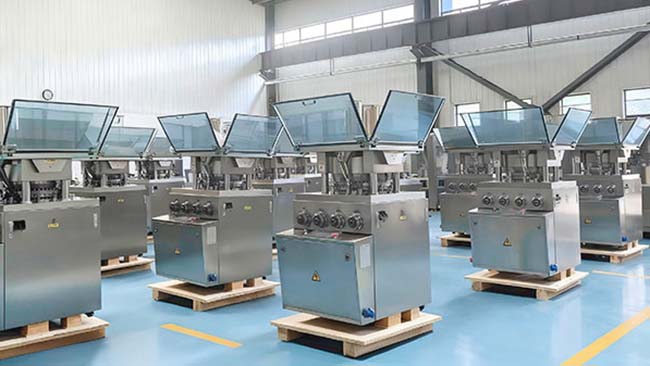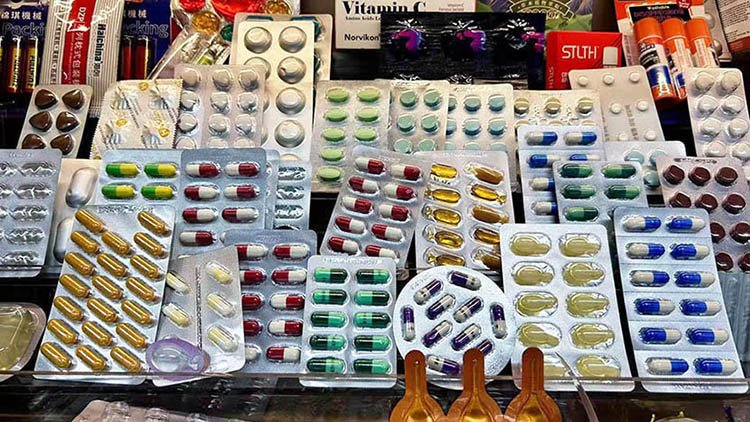
打錠機は製薬業界において重要な役割を果たしています。これらの機械は、粉末または顆粒状の材料を錠剤に圧縮するために使用され、錠剤の取り扱い、包装、そして患者への投与を容易にします。
この記事では、 錠剤圧縮機錠剤成形機の種類、構成部品、成形工程、メンテナンスについて解説します。また、医薬品製造のニーズに合わせて錠剤成形機を選定する際に考慮すべき重要な要素についても解説します。
錠剤成形機の種類
錠剤成形機には、主にシングルパンチ錠剤成形機とロータリー錠剤成形機の2種類があります。これらの2種類の錠剤成形機は、 医薬品包装機 独自の特徴を持っています。
| 錠剤圧縮機の種類 | 応用 | 利点 | デメリット |
| シングルパンチマシン | 少量生産に適した、簡素化された錠剤タイプ | 操作が簡単、安価、掃除が簡単 | 生産速度が遅く、大規模生産には適さない |
| ロータリーマシン | 大量生産、複雑な錠剤形状に適しています | 高い生産速度、複雑な形状に適しています | より高価で、操作が複雑で、清掃が難しい |
シングルパンチタブレットプレス
シングルパンチタブレットプレスは、 研究室規模または小規模生産この機械はシンプルな設計で、様々なサイズや形状の錠剤を製造できます。このタイプの機械は1時間あたり数百錠の錠剤を製造できるため、 小規模生産シングルパンチ錠剤圧縮機は、新薬の研究開発によく使用されます。
ロータリー打錠機
ロータリー打錠機は、 大量生産この機械は1時間あたり数千個の錠剤を生産できるため、 大規模製造この機械は複雑で、充填、圧縮、排出といった複数のステーションを備えています。この機械は、さまざまな形状やサイズの錠剤を高精度に製造することができます。
その他の一般的な医薬品包装機の種類
製薬業界では、厳しい品質と安全基準を満たす医薬品を製造するためにさまざまな種類の機械が使用されています。 カプセル充填機, 錠剤圧縮機、 そして ブリスター包装機 医薬品製造において最も一般的に使用されている機械の一つです。これらの機械は、錠剤、カプセル、丸剤など、様々な形態の医薬品を正確に計量、包装、ラベル付けするために使用されます。
さらに、 自動計数機 大量の錠剤やカプセルを正確かつ効率的に計数できます。 医薬品カートン詰め機一方、包装済み医薬品をカートンに詰める機械は、医薬品製造の精度、安全性、効率性を確保することで、製薬業界において重要な役割を果たしています。
2つのタイプの比較
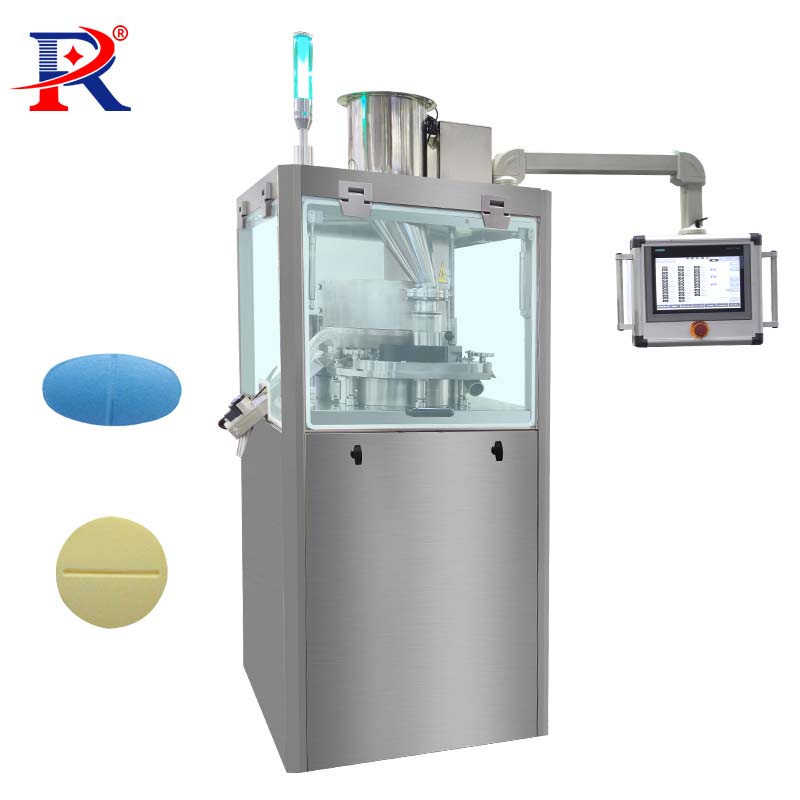
シングルパンチタブレットプレス機は設計がシンプルで小規模生産に適していますが、ロータリータブレットプレス機は複雑で大規模製造に適しています。
各タイプの長所と短所
シングルパンチタブレットプレス機 持っている 低コスト 生産能力は高く、錠剤のサイズや形状も多様です。しかし、 生産量が少ない 主に小ロット生産に適しています。
ロータリー式錠剤プレス機 持っている 高い生産量 安定した品質の錠剤を大量に生産することができます。しかし、 より高価 シングルパンチタブレットプレス機よりも多くの床面積を必要とします。
錠剤成形機のコンポーネント
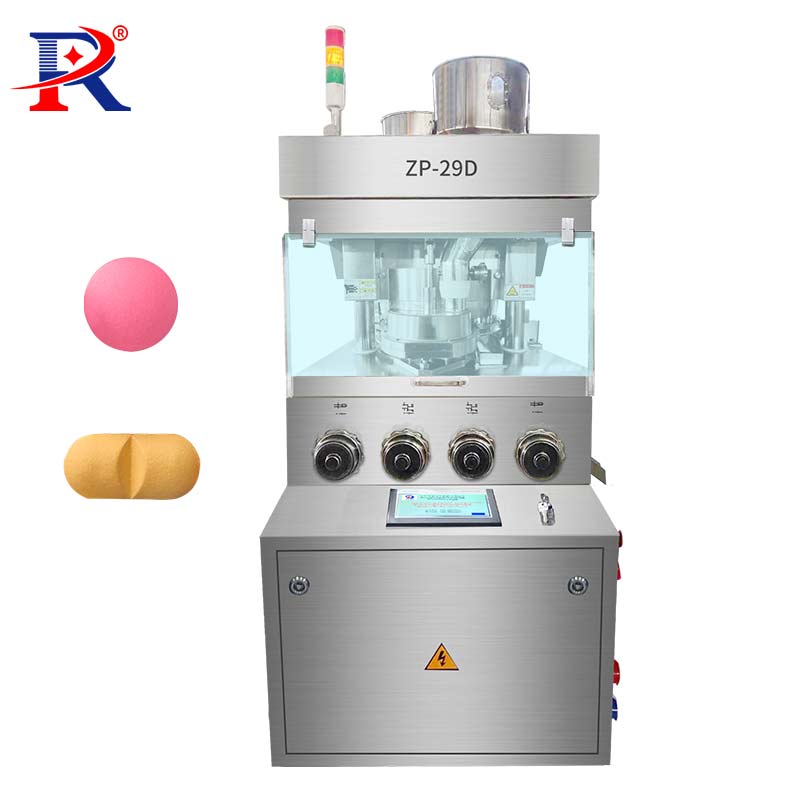
打錠機は、粉末または顆粒状の材料を錠剤状に圧縮するために連携して機能する複数の部品で構成されています。これらの部品には以下が含まれます。
A. ホッパーと給餌システム
ホッパーと供給システムは、 原材料を金型システムに供給するホッパーは原料を受け取り、ダイキャビティへ供給します。ホッパーと供給システムの適切な設計と操作は、錠剤の重量と品質の一貫性を確保する上で非常に重要です。
B. ダイシステム
ダイシステムは、 タブレットを成形する上パンチと下パンチ、パンチガイド、そしてダイディスクで構成されています。材料はダイキャビティに供給され、上パンチによって錠剤の形状に圧縮されます。ダイシステムは、所望のサイズ、形状、品質の錠剤を製造できるように設計する必要があります。
C. 圧縮システム
圧縮システムは、 材料を錠剤の形に圧縮するこのシステムには、主圧縮ローラーと補助圧縮ローラーが含まれます。錠剤の重量と品質の一貫性を確保するには、圧縮システムの適切な設計と操作が不可欠です。
D. 制御システム
制御システムは、 錠剤圧縮機のさまざまな側面を制御する機械の速度、錠剤の重量、錠剤の品質など、様々な要素を考慮した制御システムです。制御システムは、機械の設計と用途に応じて、手動または自動で行うことができます。
錠剤プレス機のプロセス
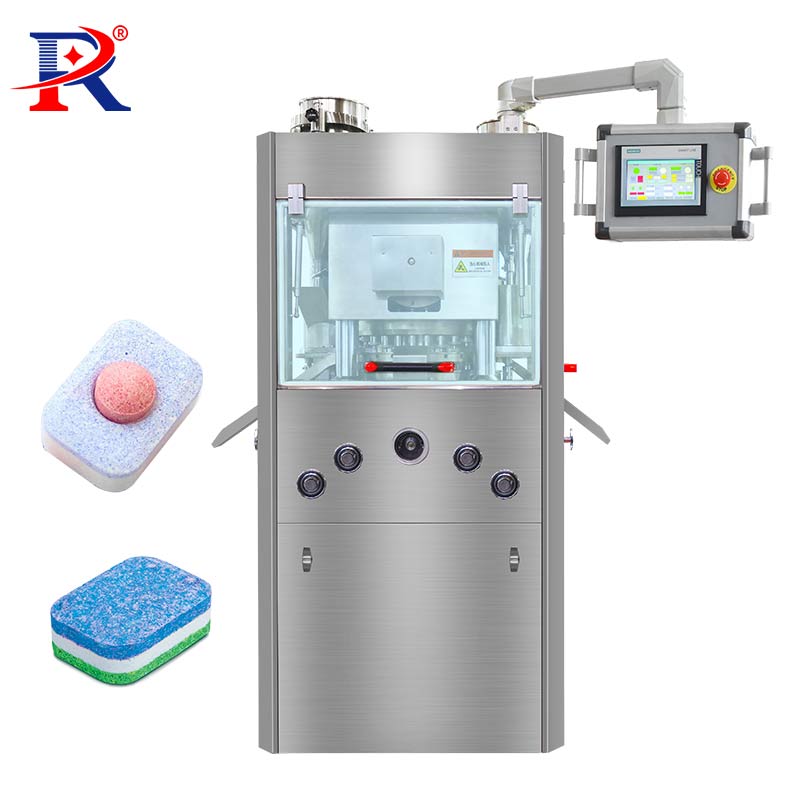
錠剤成形機のプロセスは、医薬品製造プロセスにおいて極めて重要な部分です。このプロセスには、高品質の錠剤を製造するために連携して機能する複数の段階が含まれます。これらの段階には以下が含まれます。
第一段階:ミキシング
最初の段階は混合です。ここでは原料を混ぜ合わせ、均質な混合物を作ります。この段階は、錠剤の用量と品質を一定に保つために非常に重要です。
第2段階:顆粒化
第二段階は造粒であり、混合された材料を顆粒へと変換します。造粒は材料の流動性を向上させ、ダイキャビティへの適切な充填を確保するために不可欠です。
第3段階:圧縮
3番目の段階は圧縮で、顆粒を錠剤の形に圧縮します。この圧縮段階はダイシステム内で行われ、圧縮ローラーを使用することで錠剤の重量と品質が一定に保たれます。
錠剤成形機のメンテナンス
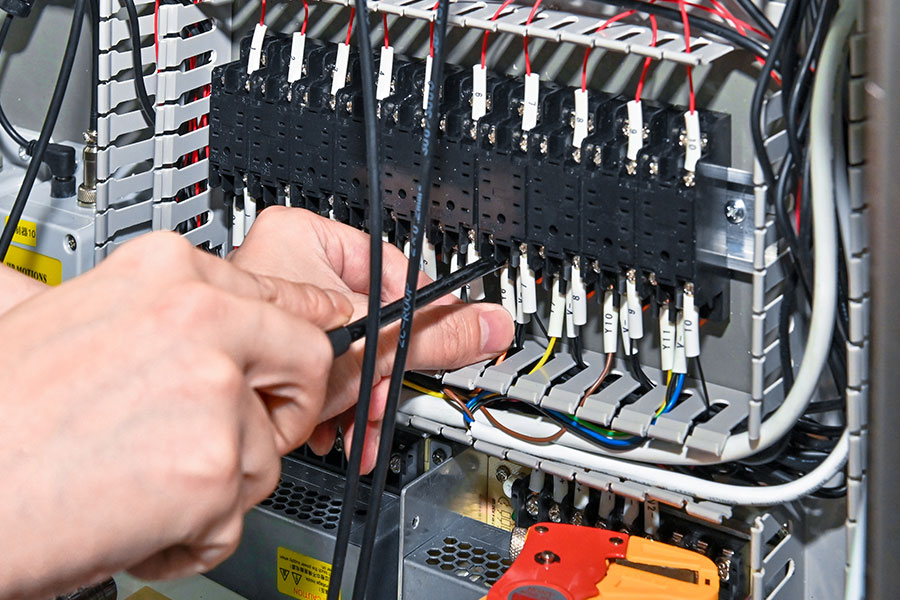
錠剤プレス機は大きな投資であり、定期的なメンテナンスが不可欠です。 最適なパフォーマンス、ダウンタイムの最小化、機械の寿命の延長適切なメンテナンスは故障を防ぎ、高品質の錠剤の製造にも役立ちます。
機械の寿命を確保するための一般的なメンテナンス
錠剤圧縮機の寿命を延ばすために定期的に実行する必要がある一般的なメンテナンス作業には、次のようなものがあります。
- 定期的に機械を清掃して、物質の蓄積を取り除き、機械に潤滑油を注ぎ、部品を錆や腐食から保護します。
- 機械のベルト、ベアリング、その他の機械部品を定期的に点検し、摩耗または損傷した部品を交換します。
- センサーやその他の測定機器の定期的な校正を実施して、錠剤のサイズと重量が正確かつ一貫していることを確認します。
- ボルトの緩み、ひび割れ、漏れなど、機械の摩耗の兆候がないか定期的に検査します。
清潔さを維持し、ダウンタイムを最小限に抑えるためのヒント
錠剤成形機を清潔に保ち、適切なメンテナンスを行うことは、最適な性能を継続的に維持し、ダウンタイムを最小限に抑えるために不可欠です。機械の清潔さを保ち、ダウンタイムを最小限に抑えるためのヒントをいくつかご紹介します。
- 毎日、毎週、毎月の清掃作業を含む清掃計画を策定します。
- 洗浄ブラシ、エアガン、掃除機など、錠剤圧縮機特有の課題に対処するために設計された特殊な機器を活用します。
- 定期的に機械の摩耗の兆候を検査し、問題があればすぐに対処して、高額な修理費用やダウンタイムの延長につながる可能性のあるさらなる損傷を防止します。
まとめると、錠剤成形機の性能を最大限に引き出し、寿命を延ばすには、定期的なメンテナンスが不可欠です。定期的なメンテナンスを実施し、機械を清潔に保ち、問題が発生した場合には迅速に対処することで、製造業者はダウンタイムを最小限に抑え、故障のリスクを軽減し、高品質の錠剤を確実に製造することができます。
結論
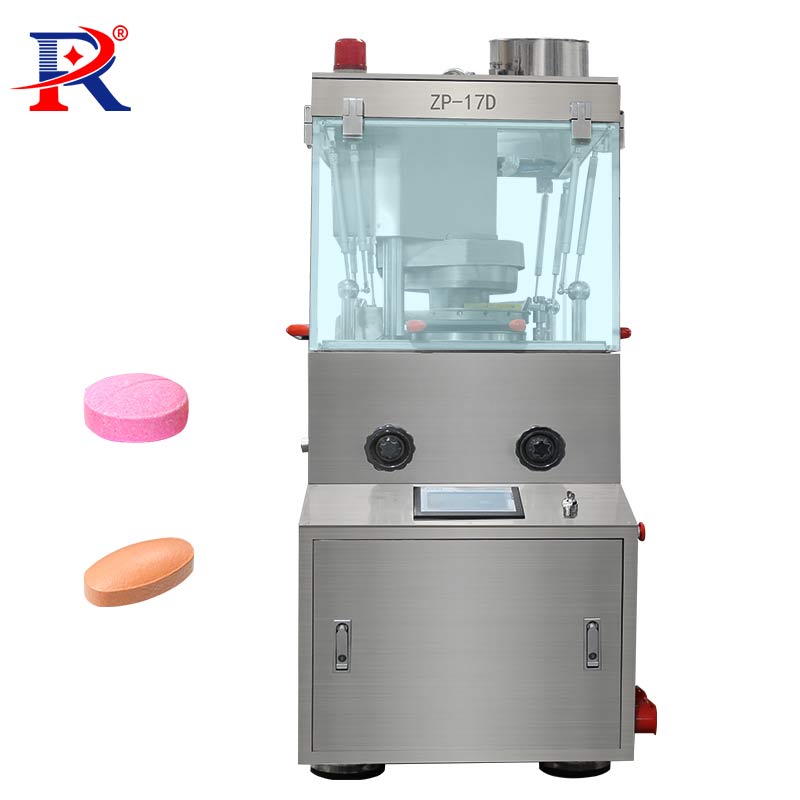
結論として、錠剤成形機 重要な役割を果たす 製薬業界では、粉末または顆粒状の物質を錠剤に圧縮して取り扱い、包装し、患者に投与しやすくするために使用されています。さらに、 適切な選択と安全な操作 錠剤圧縮機は、効率的で安全な医薬品製造プロセスを確保するために不可欠です。

